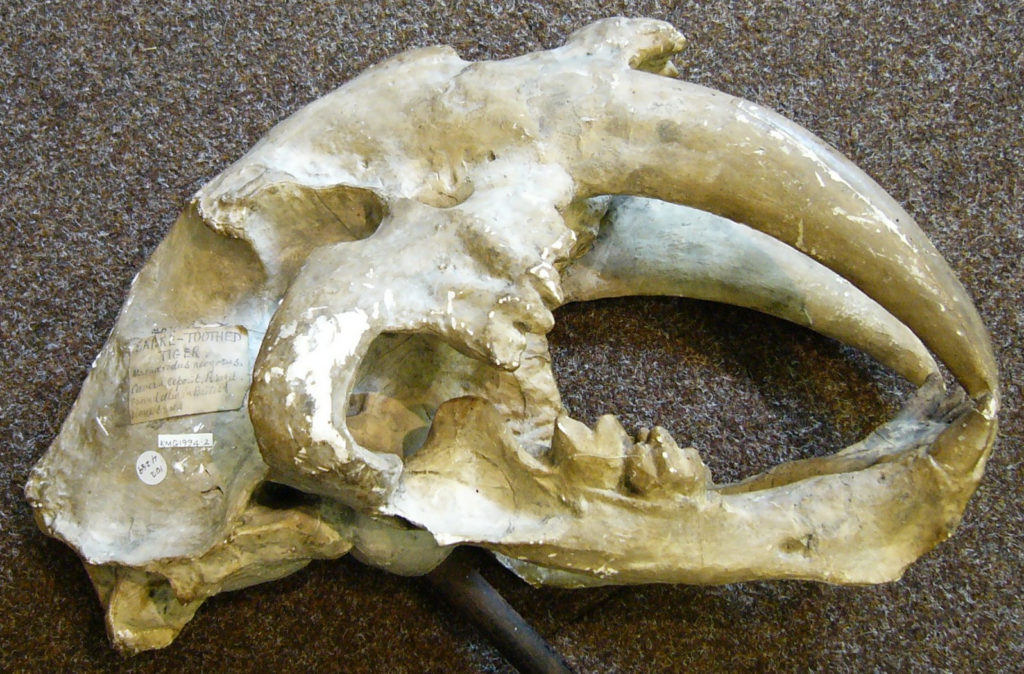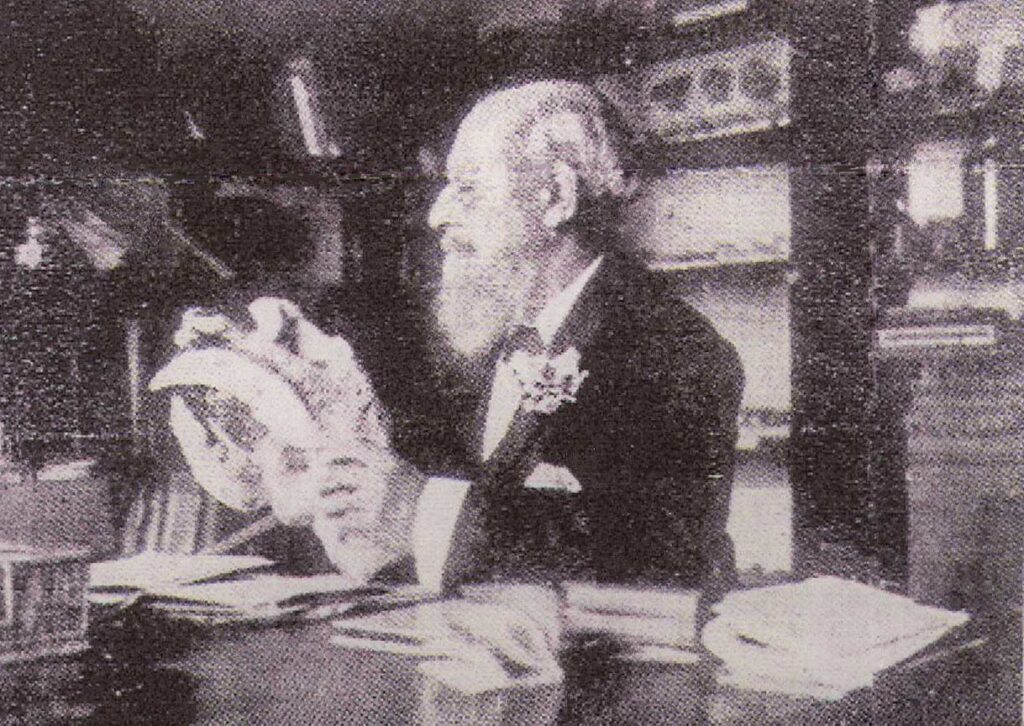
This specimen is a Victorian cast of a sabre toothed tiger found in Brazil as a cave deposit. Even as a plaster cast is it very valuable as a museum specimen, coming from the Victorian age when such casts commanded great interest. It was originally in the Sessions collection. The Sessions collections went on to form one of the main collections of Kendal Museum. Here is a picture of Sessions himself handling this specimen!

In the early 1900s, Mr. Frederick Sessions had a private museum in three rooms at Stramongate School (then a boarding school where his son was headmaster). He had begun his collection while travelling in the East as a Quaker missionary, but added local material relating to technology, geology, and natural history. He aimed to provide an educational experience not only for the pupils of Stramongate School but also for adult visitors and for the many elementary school children who were brought to see it. After his death, his son offered the collection to the Town as a gift.
What is Sabre Toothed Tiger?
Although commonly known as the saber tooth tiger, it was not closely related to the tiger or other modern cats. Sabre toothed Tigers lived in the Americas during the Pleistocene epoch (2.5 mya – 10,000 years ago). The genus was named in 1842 based on fossils from Brazil.
The Sabre toothed tiger was more robustly built than any existing cat, with particularly well-developed forelimbs and exceptionally long upper canine teeth.
Sabre toothed tigers hunted large herbivores such as bison and camels, and it remained successful even when encountering new prey species in South America. Sabre toothed tiger is thought to have killed its prey by holding it still with its forelimbs and biting it.
Sabre toothed tigers probably lived in closed habitats such as forests and bush, which would have provided cover for ambushing prey.
Sabre toothed tigers died out at the same time that most North and South American megafauna disappeared, about 10,000 years ago. Its reliance on large animals has been proposed as the cause of its extinction, along with climate change and competition with other species, but the exact cause is unknown.
Come and explore the Kendal & Westmorland and World Wildlife Galleries at Kendal Museum and learn more about our wildlife.

